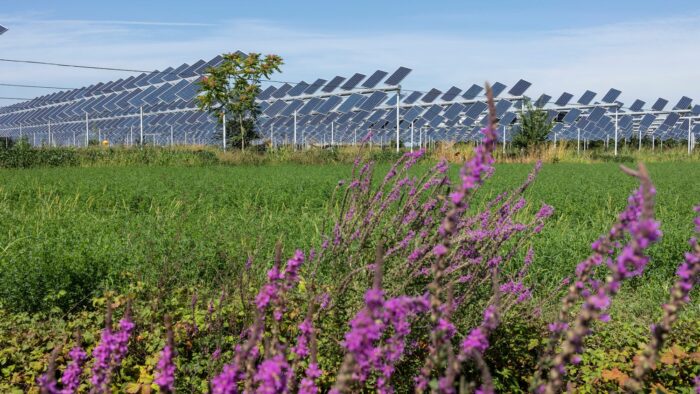It is a « war or fire » between photovoltaic developers for a place in the sun for their patented systems in the French countryside! ! This is evidenced by the numerous announcements of large private or public energy plant projects and the positions taken by professional and institutional players, including the French government. What place is there for citizen communities in this announced wave if we want to try to reframe it with the European directives on the subject? Is there still time and how?
In these debates between the protection of landscapes in agricultural or natural areas and the development of renewable energies for the ecological transition, could not citizen communities be the best places for exchanges, in order to reach an innovative but reasonable consensus in the face of these societal demands in terms of solidarity between towns and cities, villages and their countryside?
The following are some representative examples of this effervescence on the web.
Jean-Louis Pacitto, MALTAE
Agrivoltaics: a law to come out of the shadows
Vincent Demazel, published on 22 November 2022

The law on agri-voltaics soon to be debated in the French National Assembly should clarify the legal framework for this activity and prevent the disorderly multiplication of projects, some of which reduce food production to the bare minimum.
On the one hand, the growing climate risk and the urgent need to develop renewable energies. On the other hand, there is a pressing need to prevent the rampant artificialisation of agricultural land. The legislator plans to arbitrate between these two legitimate but potentially contradictory ambitions. There is an urgent need for a law on agri-voltaics. All the more so since this new photovoltaic market, which is supposed to reconcile agricultural production and electricity production, is attracting the interest of many energy operators. It is feared that a certain speculative frenzy will destabilise the agricultural land market. And that in the end, many projects that are much more photovoltaic than agricultural are eating up space.
Photovoltaics and agricultural land: an issue at the heart of energy objectives
Published on 27 April 2022
The development of photovoltaics (PV) on farms is an important contribution to achieving the target of 40% renewable energy in electricity generation by 2030. Beyond the already dynamic deployment on the roofs of agricultural buildings and on degraded or artificial surfaces, PV installations on agricultural land could contribute to the achievement of the objectives set in the Multiannual Energy Plan (MAEP). However, development on agricultural land poses the dual challenge of seeking space and preserving agricultural land. It is therefore important to ensure the preservation of soil quality and to take into account the impacts on agricultural activities, both in terms of the direct interactions between these two types of production (food and energy) and the potential economic, social, territorial and environmental consequences of such an association. Several types of projects can meet these different criteria, and their deployment could help to catch up with France’s renewable energy development targets. Among these, agri-voltaics is distinguished by the service(s) it provides in response to an agricultural problem and by the synergy it presents between primary agricultural production and secondary PV production. However, other projects have been identified that demonstrate a balance between the two activities, including access to technical equipment for the farm.
